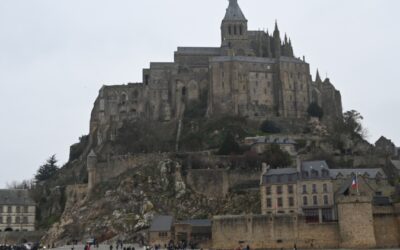Travel is more than just seeing new places—it’s about the experiences, the memories, and the freedom of exploring the world on your own terms. One of our most memorable adventures took us through multiple destinations in Europe, celebrating Raun’s birthday across Belgium, Portugal, Barcelona, and Paris. Each city had its own charm, but Barcelona left a lasting impression with its stunning architecture, rich history, and vibrant atmosphere. Savoring Barcelona was a reminder that sometimes the most unforgettable adventures are the ones where you slow down, look closer, and let the spirit of a place truly stay with you.
Savoring Barcelona
Exploring Barcelona: A Brief History
Barcelona, the capital of Catalonia, has a history dating back over 2,000 years. Originally a Roman settlement, the city has been influenced by various cultures, including the Moors and the Franks, before becoming a major Mediterranean power during the medieval period. Today, it is known for its modernist architecture, particularly the works of Antoni Gaudí, its rich artistic heritage, and its lively culture that blends the old with the new.
Touchdown in Barcelona
Our flight from Lisbon to Barcelona was a quick 45 minutes. After checking into our hotel, we hit the ground running, heading straight to La Rambla—a bustling street filled with shops, restaurants, and lively activities. There was so much to see and do, from street performances to local markets, making it the perfect introduction to the city.
Day Two: Gaudí’s Masterpieces
We started our day visiting Casa Batlló, one of Antoni Gaudí’s masterpieces. The exterior, decorated with mosaic tiles, is a stunning display of color and creativity. Inside, the curving, organic shapes create a whimsical atmosphere, with very few straight lines. The rooftop offers an incredible panoramic view of Barcelona, making it well worth the visit.
- Tickets: Casa Batlló offers several ticket options, including standard entry, immersive experiences, and night visits. Booking online in advance is recommended to avoid long lines.
- Best Time to Visit: Early mornings or late afternoons offer a quieter experience with fewer crowds.
- Accessibility: The site is wheelchair accessible and has an elevator to the rooftop, and audio guides are available in multiple languages.
- Photography: Photography is allowed, but flash and tripods are prohibited to preserve the ambiance of the space
Next, we visited the breathtaking La Sagrada Familia, Gaudí’s most famous work. Though he passed away in 1926 before its completion, construction continues to this day, following his original designs. Walking through this magnificent church is truly breathtaking—the intricate stained-glass windows cast colorful patterns of light, and the towering columns create a serene and almost ethereal atmosphere, and the sheer scale of the design is awe-inspiring.
- Tickets: It’s best to purchase tickets in advance online, as they often sell out. There are various options, including basic entry, guided tours, and access to the towers for incredible views of the city.
- Best Time to Visit: Early morning or late afternoon to avoid the biggest crowds.
- Dress Code: While there is no strict dress code, it is a religious site, so modest attire is recommended. Shoulders should be covered, and hats should be removed inside.
- Accessibility: The site is wheelchair accessible, with elevators available for those needing assistance. However, the towers are not accessible by wheelchair.
Day Three: Architectural Marvels and Culinary Delights
Barcelona’s food scene is just as captivating as its architecture. One of our favorite dishes is seafood paella—a must-try when visiting the city. The blend of fresh seafood, saffron-infused rice, and bold flavors make it a standout meal. Many restaurants serve paella, but for the best experience, look for places that prepare it fresh to order rather than pre-made versions. In addition to paella, tapas bars offer a fantastic way to sample a variety of Spanish dishes, from patatas bravas to Iberian ham. The food scene in Barcelona is vibrant, and every meal felt like an experience in itself.
We spent the morning walking along Passeig de Gràcia, admiring the stunning buildings. Another Gaudí masterpiece, Casa Milà (also known as La Pedrera), was a highlight with its unusual curved facade and stunning rooftop.
Day Four: Exploring the Heart of the City
We started the day in Plaça de Catalunya, Barcelona’s central square, which sits between the old city of Ciutat Vella and the 19th-century Eixample district. Between sightseeing, shopping, and listening to street musicians, we soaked up as much of the city as possible. The area is lively and bustling, though we had to keep an eye out for pickpockets.
We also visited the Cathedral of Barcelona, a stunning Gothic structure that added another layer of history to our trip.
- Dress Code: Visitors should wear modest clothing, covering shoulders and knees, as it is an active place of worship.
- Entry Fees: General admission is free, but access to certain areas like the rooftop may require a ticket.
- Best Time to Visit: Arriving early helps avoid crowds, and attending a service offers a unique cultural experience.
- Photography: While allowed in most areas, be respectful of those who are there for worship.
Unforgettable Nights at La Pepita
Tucked away near our hotel, La Pepita felt like the kind of place you just stumble upon—but once you do, you never forget it. This cozy, family-owned tapas bar instantly wrapped us in its warm, lively energy. The food? Unreal. The sangria? Possibly the best we’ve ever had. The service? Like we were longtime friends rather than first-time visitors.
Because it’s small (and wildly popular), you’ll want to arrive early or snag a reservation. We arrived early, within minutes, found ourselves deep in conversation with a mix of fellow travelers—a couple from the U.S. celebrating a birthday, a solo adventurer from New York, and two hostel mates from Germany and Canada.
Raun always jokes that I have a way of getting people to open up, and maybe he’s right. I love hearing about where people have been, what they’ve loved, and the lessons they’ve picked up along the way. There’s something magical about these moments—strangers becoming friends over shared stories, good food, and a mutual love for adventure.
As the night went on, the bartender picked up on our lively group and, with a knowing smile, surprised us. He brought out a dessert, sparklers flickering, and suddenly the whole bar was singing Happy Birthday to Raun and our new friend. It was one of those unexpected travel moments—the kind that just happens but sticks with you forever. Laughter, cheers, and new friendships made it a night we’ll always remember.
Travel Tips: Navigating Schengen Countries & Passport Rules
If you’re planning a European adventure, here are a few essential travel tips:
- Schengen Zone Travel
- Barcelona, like most of Europe, is part of the Schengen Area, meaning travelers from outside the EU can move between Schengen countries without border checks.
- Most tourists can stay up to 90 days within a 180-day period without needing a visa.
- Keep an eye on your travel timeline to ensure you don’t overstay your allowed period.
- Passport Validity and the 6-Month Rule
- Many Schengen countries require that your passport be valid for at least six months beyond your planned departure date.
- Double-check your passport’s expiration date before booking your trip to avoid any last-minute issues at immigration.
Final Thoughts: Savoring the Adventure
Barcelona is a city that leaves an impression long after you’ve left. From its rich history and stunning architecture to its incredible food and welcoming people, it’s a place that embodies adventure and connection. Whether you’re exploring Gaudí’s masterpieces, enjoying tapas at a local bar, or making new friends along the way, every moment in Barcelona is one to be savored.
For anyone dreaming of a European journey, remember: the adventure is yours to shape. Plan ahead, embrace the unexpected, and let the magic of travel take you wherever your heart desires.





0 Comments